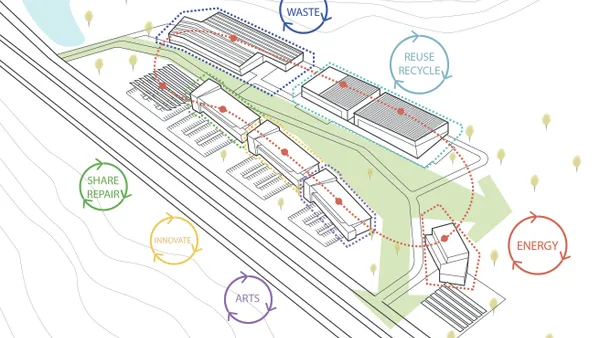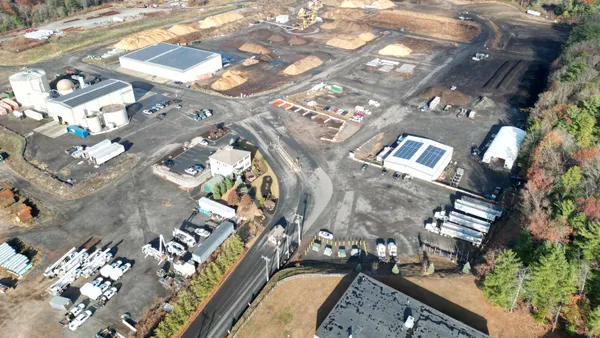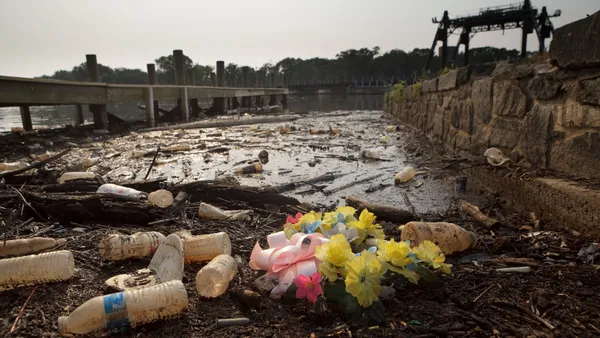Dive Brief:
- Japanese researchers have discovered a bacteria that eats PET, the only known source to fully break down this plastic type, according to German biochemist Uwe T. Bornscheuer. When it comes in contact with PET, the bacteria "ideonella sakaiensis" binds with the polymer, breaks it down into an intermediate substance, and that substance is further broken down into PET’s two building blocks — after which it can be made into new PET.
- Researchers also sequenced the bacteria’s genome, which could allow enhanced engineering of bugs to destroy PET.
- Bornscheuer told Fast Company that discovering the "secrets of plastic-eating organisms" can combat the plastic issue plaguing our Earth, and also help researchers understand "how nature adapts to man-made materials."
Dive Insight:
"When we understand the underlying principals, then we can [potentially] improve the strain to make it better and faster," said Bornscheuer to Fast Company, adding that genetically modified bacteria would have to be used in controlled settings to avoid disturbing other environments. "We can take this information and the knowledge to put it into other micro-organisms, which we can engineer in the lab."
But at this stage in the research, what the investigators have is a bacteria that is only somewhat "fast-acting." It took six weeks in a lab to break down a thin PET film. Further, there are plastics other than PET and multiplastics products that I. sakaiensis will not devour. Still, Bornscheuer is optimistic about what the discovery may someday mean: a better way to manage plastic waste.
There have been talks of biodegradable plastics for some time, and the few existing technologies are still in their infancy, yet to be marketed and proven in most cases, such as one company’s early development of what it calls a biodegradable clay-based plastic brick. And as with many new innovations, there have been questions with biodegradable plastics tied to health and the environment.














